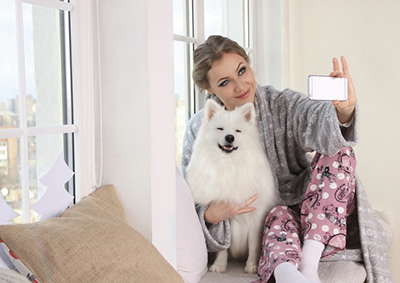Taking Medical Photos of Your Pet

Taking Medical Photos of Your Pet
The smartphone has revolutionized much of life today. Not only can we stay in constant contact with family and friends, but we can also listen to music, watch sporting events, and record life’s important moments in photographs and video. In a previous blog post, I suggested how you could use your smartphone to keep your pet healthy.
Smartphones have also revolutionized veterinary care via apps, access to scientific journals, and rapid communication with pet families. Your smartphone has improved my ability to care for your pet when you use it to send me images to keep me abreast of changes in your pet. Some photos are more helpful than others. Here are my suggestions to help you take the best medical photos possible.
Focus
Below is a very crisp, clear photograph of a healing incision. The photographer owner was concerned the incision was red on one end of the incision. I agreed with her assessment, but it was not severe enough for a trip to the ER, and the over the next two days the skin around the incision became normal again.

Compare the previous photo to this one. You can see it is out of focus and because it was out of focus I could not determine what the owner was trying to convey using this image.

Zoom In, Zoom Out
Sometimes, two photos would be helpful. The first photo should show where the problem is on the body, and the second should be closer in to show what the area in question actually looks like. On left is a photo of the elbow of a pug. The wider scope of the photo helps me see where the lesion is and how big it is. On the right is a close-up and I can readily see a bald patch without infection or swelling. If you send me only the second photo, I am at a loss as to the location of the abnormality.

Title Your Photo
Sometimes you are so worried about your pet, you snap a photo and send it to me without a label or caption. Without more information, I am at a loss as to what I am looking at or how I should respond. For example, the heading in the email said “Rosie today”. I couldn’t figure out what I was looking at. Turns out the photo was an out of focus close up of a stool sample with a fleck of blood on it. If the title was “Rosie’s poop today”, I could have grasped the owner’s concern.
And because a picture is worth 1,000 words, you can tell me a lot more about your pet with one well taken photograph rather than a very long email. So get clicking and start sending, but focus, title and frame those photos!

































